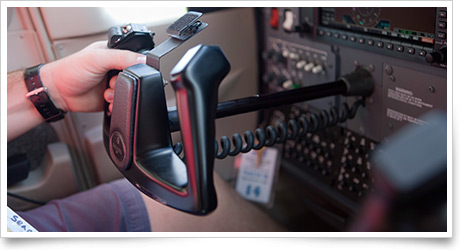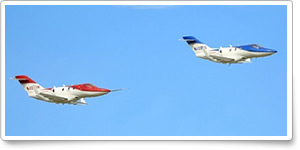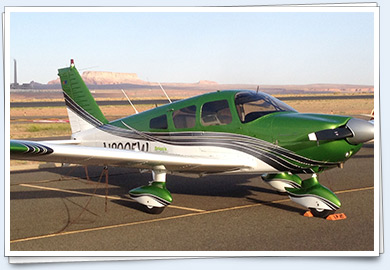|
|||||
Training TipsAssertive on the controls
Nice job! You stopped on the center line, aligned properly, without drift, and within 200 feet of the specified point, all as required to perform the maneuver to standards on a private pilot practical test.
Especially good was your braking: firm and effective but without sliding the tires or compromising directional control, your instructor notes.
A short-field landing’s combination of precision and assertive handling is a good example of maneuvers that require smoothness and excellent timing, while the pilot also ensures that the control inputs get the job done.
It takes practice—and confidence derived from it—to wring maximum performance from your aircraft consistently. And if you have been simulating your short-field work on a long, wide runway with obstruction-free approaches, be sure to get some dual practice at airports where a short-field approach is the normal, everyday way of doing things.
Other maneuvers come with a different set of aerodynamic considerations while still requiring that you don't sacrifice smoothness and precision for the assertiveness needed to extract needed performance from your aircraft.
Taking off from a soft or rough field, goal one is to become airborne at the lowest possible airspeed. That calls for aggressive pitch management (and lots of right rudder to control direction). Once airborne, lower pitch aggressively to keep the aircraft flying in ground effect until it can accelerate to a safe climb airspeed.
Maneuvering during slow flight is another scenario requiring assertive but restrained inputs to maintain control at a high angle of attack.
When performing a crosswind landing, sideslipping demands sufficient bank to offset drift, and rudder as needed to keep the nose (the longitudinal axis) pointed down the extended center line.
A forward slip to lose altitude—another application of intentionally crossed controls—will only work if the pilot avoids an increase in airspeed, a commonly observed error.
Perhaps the best example of a controlled combination of aggressive flying and a fine touch on the controls is the maneuver of choice when a landing isn't working out: the go-around. Make practicing them the rule, not the exception, on training flights! Flight Training NewsAble Flight graduates get their wings at AirVentureSix brand-new pilots received their wings at a special ceremony honoring Able Flight graduates on July 30 at EAA AirVenture. Able Flight, a nonprofit organization that helps people with disabilities learn to fly, has created 33 new pilots since its inception in 2006, Able Flight Executive Director Charles H. Stites said. “Our success rate is three times the national average,” owing to the quality of the instruction the student pilots receive, as well as the dedication and focus of the students themselves, he said. Read more >> Build A Plane teens reunite with the Glasairs they builtSeven of the eight teenagers who built two taildraggers over a span of two weeks in June were reunited with “their” airplanes at EAA AirVenture in Oshkosh, Wis. The teens were winners of a contest sponsored by the General Aviation Manufacturers Association and Build A Plane. Students from high schools in Saline, Mich., and Canby, Minn., spent two weeks at the Glasair Aircraft facility in Arlington, Wash., assembling two Sportsman aircraft. The airplanes taxied and flew for the first time in late June. Read more >> King Schools offers helicopter FIRCKing Schools is launching an online flight instructor refresher course (FIRC) tailored for helicopter instructors. “The helicopter industry is a thriving part of general aviation,” said John King, co-founder of San Diego-based King Schools, with wife Martha King. “It’s an unbelievably good part of GA, but helicopter instructors had always felt left out.” The courses for helicopter instructors will include video vignettes that examine a series of risk-management decisions and possible outcomes. Read more >> Yves Rossy trains student JetmanAfter flying across the English Channel, over the Grand Canyon, around Christ the Redeemer in Rio de Janeiro, and in formation with L-39s, wing walkers, and a DC-3, Jetman Yves Rossy’s dream of flying like a bird is moving to the next phase—training others to do the same. Rossy revealed to EAA AirVenture attendees Aug. 1 during the evening Theater in the Woods event that he has a student Jetman. Someday, he said, he would like to start a Jetman flight school. Read more >> More than just lines on paperWhether you're working on your instrument rating or recently passed the checkride, IFR charts are frequently updated to reflect new systems, procedures, and equipment—all to make the skies safer for all. Do you know how to decode the charts needed for your flights? Learn more by taking the Air Safety Institute's IFR Insights: Charts online course. Log in to take the course >> Wrong place, wrong timeRunway incursions can happen in just seconds, whether a single miscalculation or a host of slipups converging at the wrong time. That’s why it’s important to communicate clearly and appropriately, double-check clearances, be vigilant, and have good situational awareness when maneuvering on the airport. Watch this Air Safety Institute video animation of a near collision on the runway between a Canadair Regional Jet and a Cessna 172 at Allentown, Pa., to learn what went wrong, and how to avoid a similar scenario. Watch the animation >> Training ResourcesOnline course covers special-use airspaceThe Air Safety Institute presents Mission: Possible—Navigating Today’s Special-Use Airspace, an online course that helps you review the key points of navigating special-use airspace and learn how military lights-out training could affect you.
Did you know that student pilots who join AOPA are three times more likely to complete their flight training? Membership includes unlimited access to aviation information by phone (800/USA-AOPA, weekdays from 8:30 a.m. to 8 p.m. Eastern time) or from Flight Training Online or AOPA Online. If you’re not already a member, join today and get the pilot’s edge.
CBP has no record of invasive searchU.S. Customs and Border Protection claims it has no record of the detention and search of a law-abiding pilot that prompted an outcry in the general aviation industry. Plus, Beechcraft marks a major Bonanza milestone. AOPA Live This Week® will also sample audience reaction to Disney's Planes, a special sneak-peek showing at EAA AirVenture that had kids dreaming of flight. As of publication time, AOPA Live producers were finalizing this week's episode. Check back on the AOPA Live page for the latest edition that will be available Aug. 9. Career PilotConcessions could be needed for American, US Airways mergerThe U.S. Department of Justice continues to review the planned merger of American Airlines parent AMR Corp. and US Airways Group Inc., announced in mid-February and which the companies have said they hope to close during the third quarter of 2013. The discussions could raise the matter of concessions to win antitrust approval, The Wall Street Journal reported July 25. The Department of Justice could focus on the combined position of American and US Airways at Ronald Reagan Washington National Airport, where competitors have noted that the merged carrier would control two-thirds of flights, and about half of the seats, at the Washington, D.C., airport. American continues fleet renewal with first A319Taking the next step toward creating a more modern, fuel-efficient fleet, American Airlines on July 23 took delivery of its first Airbus A319, the first of 260 planned Airbus narrow-body jets. In addition to significantly increased technology offerings in the cabin, the new A319s have Sharklets on the wings and other modifications to reduce fuel burn. American’s A319s will begin service in September from Dallas/Fort Worth to Charlotte, N.C.; Cleveland; Memphis, Tenn.; and Wichita, Kan., with additional routes through the end of the year.
For more aviation career news, see the Flight Training website. Plane SpotterHow a jet should look
Training ProductsFAA film covers runway safetyFly Right Films has posted Face to Face, Eye to Eye, Fly Right, a video produced for the FAA Runway Safety Program Office. It offers a gritty, up-close look at air traffic control in congested airspace. MyWrittenExam.com offers prep for FAA knowledge testMyWrittenExam.com allows users to practice FAA tests, made up of all of the official FAA questions and answers. The website covers five different airman certificates—recreational, private, instrument, commercial, flight instructor—and more than 40 ratings.
Note: Products listed have not been evaluated by ePilot editors unless otherwise noted. AOPA assumes no responsibility for products or services listed or for claims or actions by manufacturers or vendors. Member BenefitsTop five dumb aviation medical examiner tricksNot all aviation medical examiners are created equal, and some do not act in the best interests of their pilots. When the AME doesn’t follow correct procedures in handling your application, the incorrect actions or inactions will usually result in you receiving a request from the FAA for more explanation and medical records, and your AME will receive an “error check” in his or her FAA file. Read more >> BlogsLessons from a recent cross-countryFor some people, flying a cross-country trip is no big deal. Check the weather, file a flight plan, and off they go. AOPA Technical Editor Jill Tallman writes that she envies those people. For her, it’s a “huge production” and things still don’t go as planned. She shares six lessons learned from her recent cross-country from Maryland to Wisconsin and back. Read more >> AOPA Career OpportunitiesEver dream of turning your passion for aviation into a career? We’re looking for an AOPA Live editor/graphic artist. To learn more about other AOPA career opportunities, visit AOPA Online. Community
AVIATION EVENTS & WEATHER
|
||||||||||||||||||||||||||||||||||||

 Passing the (theoretical) 50-foot obstacle that appears in the short-field landing performance table for your trainer, you idle power, maintain the recommended airspeed, touch down on the main wheels (of your tricycle-gear aircraft), lower the nose, and apply heavy braking.
Passing the (theoretical) 50-foot obstacle that appears in the short-field landing performance table for your trainer, you idle power, maintain the recommended airspeed, touch down on the main wheels (of your tricycle-gear aircraft), lower the nose, and apply heavy braking.



